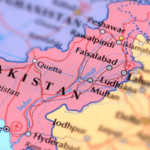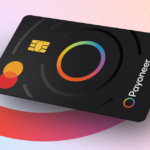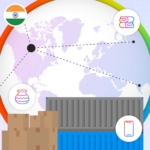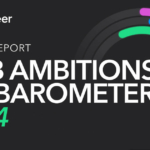Education resources
- Freelancing
- Start Up
- Marketplace & Platforms
- eCommerce
- Selling Online
- Global Business Strategy
- Checkout
- Invoicing
- Accounting
- Online Banking

Tariffs and Trade: A CFO’s Roadmap for Service Export Growth
CFOs in Bangladesh are reshaping how service exporters scale in uncertain times. As global trade tensions rise, the country’s IT and business services sector is booming—reaching $1.4B in 2024 with 40% annual growth. By using smart currency strategies, cost optimization, and global payment tools, CFOs are helping businesses expand through tariff-proof service exports.
Payoneer Team

How to use Payoneer for B2B payments and invoicing in the Philippines
Learn how to use Payoneer for B2B payments and invoicing in the Philippines. Discover international payment methods, invoicing features, and cross-border tools.

A comprehensive guide to cross-border payments
Outsourcing is a great way to grow your business. But the relationship depends on smooth, secure, on time payments. You also need to pay using local currency and payment methods. This guide shares best practices for B2B payment providers. The right payment provider helps work with the best, anywhere!

Reduce Payoneer costs: Strategies for cost savings
Find out how to withdraw money from Payoneer to Ukraine: an overview of banks, types of accounts, and advice on how to minimize commissions and risks

Tariffs and Trade: A CFO’s Roadmap for Service Export Growth
CFOs in Bangladesh are reshaping how service exporters scale in uncertain times. As global trade tensions rise, the country’s IT and business services sector is booming—reaching $1.4B in 2024 with 40% annual growth. By using smart currency strategies, cost optimization, and global payment tools, CFOs are helping businesses expand through tariff-proof service exports.

How to withdraw money from Payoneer to Ukraine
Find out how to withdraw money from Payoneer to Ukraine: an overview of banks, types of accounts, and advice on how to minimize commissions and risks

How Pakistan’s B2B Services Are Thriving Despite Global Slowdowns
Pakistan’s IT, BPO, and game dev exports hit $3.9B in FY24; growing despite global slowdowns. Tariff-proof digital delivery, cost-efficient talent, and global demand fuel this rise. From Systems Limited to Mindstorm Studios, firms are scaling worldwide; powered by Payoneer’s multi-currency accounts and instant PKR withdrawals.

The Ultimate Guide on How to Open a Business Bank Account in Pakistan
Discover how to open a Pakistan business bank account—online or in-person—for residents and non-residents. Learn key documents, top banks, payment methods, tax obligations, and using Payoneer.

Bill vs invoice – what’s the difference between?
Welcome to our guide on the differences between invoices and bill documents. As an eSeller, you’re familiar with these terms but may not know exactly what sets them apart. Not to worry, today we will tackle the topic of bills vs invoices. Many people use invoice and bill documents interchangeably, but these financial records have distinct meanings and purposes.[…]

Payoneer Checkout: Introducing enhanced analytics

A guide to starting a business in Estonia as a non-citizen
If you’ve thought about opening a new business somewhere with plenty of government support, expanding your business into the EU, or making it easier to work as a contractor or digital nomad anywhere in the European Economic Area (EEA), you should think about starting a business in Estonia...

Top 10 Freelancing Countries
Read on to discover which markets offer you as a freelancer the highest average earnings, which markets are growing fastest, plus wider market trends and predictions.

Everything you need to know about SMB business payments
Looking for a simple, secure way to get paid and pay others as a small business? Payoneer offers SMBs global payment solutions with low fees, flexible currency options, strong compliance, and seamless integrations with tools and marketplaces—making international business smoother and smarter.

Best Digital Products to Sell Online: 10 Best Marketplaces for Digital Products
Digital products like eBooks, music, and software are in high demand. Here’s a quick guide to the top marketplaces to sell them—and how Payoneer helps you get paid globally.

The Payoneer guide to SWIFT payments – Find your Payoneer SWIFT code

Best invoice payment methods to get paid faster

How to improve cash flow management for your ecommerce business

Boost your sales: 10 habits of successful online sellers
Are you ready to transform your online sales game? The most successful online sellers have mastered a set of habits that consistently drive their success. Curious to know their secrets? Read on to uncover the top 10 habits that can boost your sales and take your business to new heights!

Freelance hourly rate calculator

5 benefits of diversifying your revenue streams

Adapting Your eCommerce Store for Virtual Assistants and Smart Speakers

Manage all your Amazon stores with Payoneer’s Store Manager
Payoneer's Store Manager enables ecommerce sellers doing business on one or more marketplaces to track multiple store payments across multiple marketplaces from one convenient location.

How to improve cash flow management for your ecommerce business
For online sellers, cash flow issues can be a regular occurrence. Whether you’ve seen a decrease in sales, experienced supply-chain complications, or are looking to seize a new opportunity to grow your business, it’s always important to have enough cash on hand. Here, we detail how you can overcome common cash flow challenges, ensuring you have enough funds to maintain your business and take advantage of new ways to expand.

From small beginnings, mighty things grow: SMB challenges and how to overcome them

An alternative to opening a business bank account in the UK

Discover how much you can save with Payoneer Checkout
Compare potential checkout savings fees between Payoneer, PayPal, and Stripe . Excludes gateway and chargeback fees

Paying contractors and remote employees in Latin America

Alternative to opening a business bank account in the US

How to bill your international clients
Want to learn how to bill international clients when you’re based in the Philippines? In this article we spoke to three leading business owners who shared their tips to working successful international work. Learn how they collect payments and more below.

Global payment capabilities

How to transfer money from one bank to another (step-by-step instructions)
Transferring money from one bank to another is important for businesses working together worldwide. In this piece, we’ll look at the different ways to transfer money from one bank to another including the exact steps you need to take.

A comprehensive guide to B2B payments: definitions, methods, and solutions
Outsourcing is a great way to grow your business. But the relationship depends on smooth, secure, on time payments. You also need to pay using local currency and payment methods. This guide shares best practices for B2B payment providers. The right payment provider helps work with the best, anywhere!

Business bank accounts: Characteristics, benefits & best options in the market
Choosing the right business bank account is an important decision for any business owner. Learn more about useful functions of accounts, transfers, International payments, and more in this guide.

Selling products online: How to guide for ecommerce businesses
This guide helps ecommerce businesses sell products online. Keep reading to explore tips for identifying top-selling products, including researching the target audience, industry trends, and competition.

The bad, the ugly, and the good: UK ecommerce sellers weather the storm
What are the key challenges facing UK ecommerce sellers today? How have Brexit, inflation, and the Ukraine war affected them? And what opportunities do they see for future growth? We surveyed 130 UK SMBs to understand their hopes and concerns. Learn more about what lies in store for UK ecommerce SMBs.

Financing solutions for Amazon sellers
Financing solutions are crucial when it comes to scaling your Amazon business. While traditional bank loans may not always be accessible, alternative pathways to obtain working capital exist. Read on to learn about financing options for your Amazon business.

Brazilian freelancers rise up
In Brazil's dynamic job landscape, freelancing has emerged as a powerful force.But there are still unique challenges and opportunities they face. Read on to learn more about the impact they are making on the local and global market.

Made in India for the world: the state of Indian cross-border E-commerce
Explore Indian cross-border eCommerce post-pandemic. Our survey of Indian sellers reveals the impact of 'Make in India' on global trade. Discover how Indian-made products fare against China and the areas that need improvement for Indian sellers to thrive in the US market and beyond.

Developing a global business strategy: Benefits and steps
Developing a successful global business strategy is crucial for any business looking to expand beyond its domestic market. The benefits of entering the global market are endless. In this article, we will explore the main concepts of global business strategy.

What are invoices and why do you need them in business?
Every business owner needs to issue invoices. Learn what an invoice is, what you need to include on your invoices, and when you need to send them, and why tracking invoices is important for your business’ success.

A guide to accounting: what it is and how it works
Accounting plays a vital role in the financial management of businesses and organizations. This guide will provide an overview of accounting, explaining its fundamental principles and processes. We’ll review types of accounting, key documents, special considerations, and more.

Freelance Hourly Rate Calculator – Calculate Your Ideal Pay
Find out how much you should be charging for your freelance services and boost your bottom line.

Opportunities in Latin America are growing, are you poised to seize them?
Latin America is one of the world’s fastest-emerging markets. Thanks to high mobile adoption, eCommerce demand is growing. But outdated payment systems hamper LATAM success. How can these logistical challenges be met? Learn how to overcome these obstacles and seize opportunities!

Eliminate payout disruptions with a better local banking infrastructure
For a good payout experience, local payment processes are a must. Local payments reduce exchange fees and ensure faster payouts. Improved local banking infrastructure reduces payout disruptions. So can partnering with the right payments provider. Keep reading to find out more!

4 reasons why you need your own online web store – today

Guide to Online Checkout
The online checkout process is more than just the final step of a purchase—it’s a powerful driver of customer satisfaction, trust, and revenue. In this comprehensive guide, we break down everything you need to know about optimizing your checkout, from how it works to why it matters. Learn best practices, common terminology, and how Payoneer Checkout can enhance the experience with flexible, secure, and global-ready solutions.

US sales tax guide for international sellers
A few things have changed recently regarding US sales tax laws. As an international seller, we know you have questions. Need information on nexus? Registration? Exemptions? Read through our simple US sales tax guide for international sellers.

Managing risks and compliance in online marketplaces
In today's online marketplace, risk management and compliance are crucial for securing transactions and building trust. This article explores the significance of risk management and compliance in online marketplaces, including effective strategies to mitigate risks and ensure compliance.

How to sell online: A guide with resources to start
Online selling can be highly profitable if you use the right tools and reach the right audience with the right product. This article delves into the details of online selling, providing tips and resources for starting your own venture. Keep reading to learn how to get started, what types of products to sell, and where to sell them.

Open a business bank account in the U.K: Expand your business to the U.K.
Expanding your business to the UK? You'll need a UK bank account to do so. Pay suppliers via cheque or wire transfer, and easily get paid by your UK customers.

Invoice Payment with Payoneer
Looking for an easy way to issue invoices to clients globally? Payoneer's free invoice builder offers customizable templates for freelancers and contractors. SMBs can also benefit from fast, trackable, and affordable payment options. Read more to discover Payoneer's comprehensive cross-border payment solutions and international invoicing.

Online Banking: what it is, how it works and best options
This guide was created to help you confidently navigate the basics of internet banking. Expect to learn answers to questions such as: What is online banking and how does online banking work? We also run through safety measures for transacting online.

The difference between an invoice and a proforma invoice

Top 3 benefits of being a freelancer in the Philippines

Preferred cross-border B2B payment methods in Asia

Preferred cross-border payment methods in Europe for B2B businesses

4 reasons your business struggles to get paid on time (and how to fix it)

Alternative to opening a business bank account in Australia

Ultimate guide to hiring international contractors in Pakistan

4 Ways Your Global Customers can Pay you Directly

Are you a marketplace seller? See all the benefits Payoneer can offer you!

Streamline Your Accounting: Payoneer Integrates with QuickBooks Online

How Freelancers Can Attract New Clients Using Instagram

5 Best International Payment Gateway
In the competitive world of eCommerce, having a reliable and secure international payment gateway is essential.Payoneer is a premier solution for international payment processing, providing businesses with a range of benefits to help them expand their reach and offer their customers a seamless checkout experience. Not only can you use Payoneer to process payments, but you can also receive payouts through the platform.

5 Smart Ways to Fund a New Venture (or side gig)
![[VIDEO] How to add your Global Payment Service details to your Amazon store - Blog image 029 4 [VIDEO] How to add your Global Payment Service details to your Amazon store](https://www.payoneer.com/wp-content/uploads/Blog-image-029-4-150x150.jpg)
[VIDEO] How to add your Global Payment Service details to your Amazon store

13 High-Demand Freelancer Skills in Today’s Market
- Money Transfer
- Getting Paid
- Accounts payable
- Account receivable
- Business Taxes & Compliance
- Safety & Security
- Funding and Financing
- Treasury
- Cards

Getting paid via Bill.com? Make the most of your earnings by getting paid to your USD account with Payoneer!
Payoneer Team

Accounts receivable best practices for global service providers
It doesn’t matter how profitable your business is, if you don’t have a healthy cash flow to finance your day-to-day operations, you’re going to run into trouble. Managing your accounts receivable is critical to your financial health. It can drive your business forward or hold it back, depending on how effective you are at using it to control your cashflow. In other words, ignore it at your peril or strategize it for success.

A comprehensive guide to cross-border payments
Outsourcing is a great way to grow your business. But the relationship depends on smooth, secure, on time payments. You also need to pay using local currency and payment methods. This guide shares best practices for B2B payment providers. The right payment provider helps work with the best, anywhere!

Getting paid via Bill.com? Make the most of your earnings by getting paid to your USD account with Payoneer!

Everything you need to know about SMB business payments
Looking for a simple, secure way to get paid and pay others as a small business? Payoneer offers SMBs global payment solutions with low fees, flexible currency options, strong compliance, and seamless integrations with tools and marketplaces—making international business smoother and smarter.

The Payoneer guide to SWIFT payments – Find your Payoneer SWIFT code

Best invoice payment methods to get paid faster

SWIFT money transfer and fees guide

How to prevent online payment fraud as an SMB
Prevent online payment fraud by overcoming challenges like phishing, fake accounts, and account takeovers (ATO) with enhanced security features from Payoneer.

Secure payment systems for SMBs: discover the latest trends in payment safety
Explore the latest trends in secure payment systems and methods. Enhance your SMB payment security with up-to-date solutions. Read now for top tips!

ACH transfers: A trusted B2B payment method for your US clients

You’ve gotten paid! Now what? Five ways to use the funds in your Payoneer account.

Paying contractors and remote employees in Latin America

How to transfer money from one bank to another (step-by-step instructions)
Transferring money from one bank to another is important for businesses working together worldwide. In this piece, we’ll look at the different ways to transfer money from one bank to another including the exact steps you need to take.

A comprehensive guide to B2B payments: definitions, methods, and solutions
Outsourcing is a great way to grow your business. But the relationship depends on smooth, secure, on time payments. You also need to pay using local currency and payment methods. This guide shares best practices for B2B payment providers. The right payment provider helps work with the best, anywhere!

Business bank accounts: Characteristics, benefits & best options in the market
Choosing the right business bank account is an important decision for any business owner. Learn more about useful functions of accounts, transfers, International payments, and more in this guide.

Best online payment methods for faster transactions
By 2025, online payment methods are projected to exceed 50% of all transactions. Choosing the right payment solution is crucial for businesses to succeed. This article explores the best online payment methods for businesses, their benefits, features, and factors to consider when selecting the right one.

Financing solutions for Amazon sellers
Financing solutions are crucial when it comes to scaling your Amazon business. While traditional bank loans may not always be accessible, alternative pathways to obtain working capital exist. Read on to learn about financing options for your Amazon business.

What is tax form collection and automation?
Collecting tax forms is an essential process for marketplace business owners. In this article, we’ll discuss why it matters, how to do it efficiently, and how automation can improve the tax form collection process.

Business and payment fraud detection: what it is and how to prevent it
What is payment fraud detection and what do you need to know to understand, detect, and prevent fraudulent activities. Discover the best practices, tools, and strategies to safeguard your business against payment fraud and protect your financial assets.

What is treasury management and how does it work
The basics of treasury management What is treasury management and why is it important? Treasury management plays a crucial role in the financial operations of businesses. This piece will explore the fundamentals of treasury management, its core functions, and its importance for businesses.

What is Accounts Receivable? A guide to understanding AR and its importance
Accounts receivable (AR) is crucial for business success. By managing your AR process effectively, you can improve Your cash flow, increase revenue, and build better customer relationships. AR involves tracking and managing customer payments and outstanding balances. Our comprehensive guide will help you understand what AR is, And how you can optimize your AR process to boost your business.

Eliminate payout disruptions with a better local banking infrastructure
For a good payout experience, local payment processes are a must. Local payments reduce exchange fees and ensure faster payouts. Improved local banking infrastructure reduces payout disruptions. So can partnering with the right payments provider. Keep reading to find out more!

Fight fraud, reduce risk, and take control of your marketplace
Seller fraud is increasing across various marketplaces. eCommerce is suffering the largest losses. Yet, there are ways to detect and prevent seller fraud. And we’re here to help our marketplace partners do this. Read on to find out how Payoneer protects against fraud.

Decoding FIRC: A Guide for Indian Exporters of Goods & Services

Funding and financing for businesses: driving growth and success in the marketplace
In today's dynamic marketplace, securing appropriate funding and implementing effective financing strategies are crucial for businesses seeking to drive growth and achieve long-term success. As marketplaces continue to evolve, businesses must navigate the complexities of funding and financing frameworks to optimize operations, capitalize on emerging opportunities, and fuel their expansion plans.

Commercial debit and credit cards: What are they and how do they work?
Commercial debit and credit cards offer benefits such as expense tracking, insurance coverage, and fraud protection for corporate use. As they become the primary payment method for many business owners, Keep reading to Discover the advantages of commercial cards for businesses of all sizes types available for different use cases.

Unleashing your business’s potential in Pakistan: expert insights and strategies
Are you looking for opportunities to grow across borders? Then you’ve come to the right place. Sleek gives us expert tips to grow your business in Pakistan. Keep reading to learn how to set up shop in Hong Kong. And how Payoneer can help you bring money back to Pakistan.

Business taxes: What are the main types & how do they work?
As a business owner, it's important to understand the tax landscape in order to maintain financial stability and contribute to the larger economy. This article covers the main types of business taxes in the US, how they work, how to file them, and tips for managing your financial liability around tax payments. By the end, you'll have a better understanding of your tax obligations as a business owner.

US sales tax guide for international sellers
A few things have changed recently regarding US sales tax laws. As an international seller, we know you have questions. Need information on nexus? Registration? Exemptions? Read through our simple US sales tax guide for international sellers.

Managing risks and compliance in online marketplaces
In today's online marketplace, risk management and compliance are crucial for securing transactions and building trust. This article explores the significance of risk management and compliance in online marketplaces, including effective strategies to mitigate risks and ensure compliance.

Online Payments: what are they, types and benefits
As more people embrace digital transactions, online payments have become vital for businesses. By the end of this article, you'll have a clear understanding what online payment solutions for businesses are available for seamless online transactions. How they work, and their importance in today's digital landscape.

Preferred payment methods in US for B2B

Preferred cross-border B2B payment methods in Asia

Preferred cross-border payment methods in Europe for B2B businesses

4 reasons your business struggles to get paid on time (and how to fix it)

Securing Your Payoneer Account

6 Tips for Keeping your Payoneer Card Safe While Abroad

5 Tips for Sending and Receiving International Payments Safely

5 Best International Payment Gateway
In the competitive world of eCommerce, having a reliable and secure international payment gateway is essential.Payoneer is a premier solution for international payment processing, providing businesses with a range of benefits to help them expand their reach and offer their customers a seamless checkout experience. Not only can you use Payoneer to process payments, but you can also receive payouts through the platform.

5 Smart Ways to Fund a New Venture (or side gig)

6 Security Tips to Lower the Risk of Online Transactions for Small e-Businesses

Why Do I See Pre-Authorized Transactions in My Payoneer Account?

What You Should Know About Payoneer Card Shipping

Tariffs and Trade: A CFO’s Roadmap for Service Export Growth
CFOs in Bangladesh are reshaping how service exporters scale in uncertain times. As global trade tensions rise, the country’s IT and business services sector is booming—reaching $1.4B in 2024 with 40% annual growth. By using smart currency strategies, cost optimization, and global payment tools, CFOs are helping businesses expand through tariff-proof service exports.
Payoneer Team

US Tightens Import Rules: How Indian Exporters Can Stay Competitive
The U.S. has suspended its $800 de minimis duty exemption, meaning all shipments will now face import duties. This policy shift impacts Indian exporters in textiles, jewellery, handicrafts, and wellness. Adapting pricing, logistics, and exploring new markets will be key for small businesses to stay competitive.

Tariffs and Trade: A CFO’s Roadmap for Service Export Growth
CFOs in Bangladesh are reshaping how service exporters scale in uncertain times. As global trade tensions rise, the country’s IT and business services sector is booming—reaching $1.4B in 2024 with 40% annual growth. By using smart currency strategies, cost optimization, and global payment tools, CFOs are helping businesses expand through tariff-proof service exports.
A World of Opportunities

Tariffs and Trade: A CFO’s Roadmap for Service Export Growth
CFOs in Bangladesh are reshaping how service exporters scale in uncertain times. As global trade tensions rise, the country’s IT and business services sector is booming—reaching $1.4B in 2024 with 40% annual growth. By using smart currency strategies, cost optimization, and global payment tools, CFOs are helping businesses expand through tariff-proof service exports.
Payoneer Team

How to use Payoneer for B2B payments and invoicing in the Philippines
Learn how to use Payoneer for B2B payments and invoicing in the Philippines. Discover international payment methods, invoicing features, and cross-border tools.

US Tightens Import Rules: How Indian Exporters Can Stay Competitive
The U.S. has suspended its $800 de minimis duty exemption, meaning all shipments will now face import duties. This policy shift impacts Indian exporters in textiles, jewellery, handicrafts, and wellness. Adapting pricing, logistics, and exploring new markets will be key for small businesses to stay competitive.

Reduce Payoneer costs: Strategies for cost savings
Find out how to withdraw money from Payoneer to Ukraine: an overview of banks, types of accounts, and advice on how to minimize commissions and risks

Tariffs and Trade: A CFO’s Roadmap for Service Export Growth
CFOs in Bangladesh are reshaping how service exporters scale in uncertain times. As global trade tensions rise, the country’s IT and business services sector is booming—reaching $1.4B in 2024 with 40% annual growth. By using smart currency strategies, cost optimization, and global payment tools, CFOs are helping businesses expand through tariff-proof service exports.

How to withdraw money from Payoneer to Ukraine
Find out how to withdraw money from Payoneer to Ukraine: an overview of banks, types of accounts, and advice on how to minimize commissions and risks

How Pakistan’s B2B Services Are Thriving Despite Global Slowdowns
Pakistan’s IT, BPO, and game dev exports hit $3.9B in FY24; growing despite global slowdowns. Tariff-proof digital delivery, cost-efficient talent, and global demand fuel this rise. From Systems Limited to Mindstorm Studios, firms are scaling worldwide; powered by Payoneer’s multi-currency accounts and instant PKR withdrawals.

How to Start Your Own Virtual Assistant Agency (Mini-BPO) in the Philippines and Get Paid Legally
Learn how to legally register your VA agency in the Philippines, issue official receipts, and receive global payments with ease using Payoneer. A must-read guide for freelancers scaling to mini-BPOs.

How to Receive International Payments in India
For Indian freelancers, e-commerce sellers, and small businesses, working with global clients is easier than ever—yet receiving international payments remains a challenge. With delays, fees, and regulations to navigate, choosing the right method matters. Here’s how options like Payoneer make getting paid faster, easier, and more affordable.

The Ultimate Guide on How to Open a Business Bank Account in Pakistan
Discover how to open a Pakistan business bank account—online or in-person—for residents and non-residents. Learn key documents, top banks, payment methods, tax obligations, and using Payoneer.

Common Mistakes BPOs Make When Hiring and Paying Contractors in the Philippines (And How to Avoid Them)
The Philippines is a top global hub for remote hiring and outsourcing, exporting over $30 billion in services each year. From solo freelancers to growing virtual staffing firms, Filipino talent powers businesses worldwide. In this guide, we’ll break down five common mistakes Filipino BPOs make when hiring and paying contractors—and how platforms like Payoneer can help you avoid them from the start.

Linio Seller Center Colombia: The Gateway to LATAM Markets

A guide to starting a business in Estonia as a non-citizen
If you’ve thought about opening a new business somewhere with plenty of government support, expanding your business into the EU, or making it easier to work as a contractor or digital nomad anywhere in the European Economic Area (EEA), you should think about starting a business in Estonia...

Top 10 Freelancing Countries
Read on to discover which markets offer you as a freelancer the highest average earnings, which markets are growing fastest, plus wider market trends and predictions.

An alternative to opening a business bank account in the UK

Paying contractors and remote employees in Latin America

Alternative to opening a business bank account in the US

How to bill your international clients
Want to learn how to bill international clients when you’re based in the Philippines? In this article we spoke to three leading business owners who shared their tips to working successful international work. Learn how they collect payments and more below.

The bad, the ugly, and the good: UK ecommerce sellers weather the storm
What are the key challenges facing UK ecommerce sellers today? How have Brexit, inflation, and the Ukraine war affected them? And what opportunities do they see for future growth? We surveyed 130 UK SMBs to understand their hopes and concerns. Learn more about what lies in store for UK ecommerce SMBs.

Brazilian freelancers rise up
In Brazil's dynamic job landscape, freelancing has emerged as a powerful force.But there are still unique challenges and opportunities they face. Read on to learn more about the impact they are making on the local and global market.

Made in India for the world: the state of Indian cross-border E-commerce
Explore Indian cross-border eCommerce post-pandemic. Our survey of Indian sellers reveals the impact of 'Make in India' on global trade. Discover how Indian-made products fare against China and the areas that need improvement for Indian sellers to thrive in the US market and beyond.

Opportunities in Latin America are growing, are you poised to seize them?
Latin America is one of the world’s fastest-emerging markets. Thanks to high mobile adoption, eCommerce demand is growing. But outdated payment systems hamper LATAM success. How can these logistical challenges be met? Learn how to overcome these obstacles and seize opportunities!

Decoding FIRC: A Guide for Indian Exporters of Goods & Services

Unleashing your business’s potential in Pakistan: expert insights and strategies
Are you looking for opportunities to grow across borders? Then you’ve come to the right place. Sleek gives us expert tips to grow your business in Pakistan. Keep reading to learn how to set up shop in Hong Kong. And how Payoneer can help you bring money back to Pakistan.

How to register your business in the Philippines with PEZA
Looking to register your business in the Philippines and receive tax incentives? Registering with the Board of Investments (BOI) and Philippine Economic Zone Authority (PEZA) can help. As an entrepreneur, registering with investment promotion agencies can increase your chances of success by freeing up finances. Follow these guides to register with BOI or PEZA and take advantage of the benefits.

Open a business bank account in the U.K: Expand your business to the U.K.
Expanding your business to the UK? You'll need a UK bank account to do so. Pay suppliers via cheque or wire transfer, and easily get paid by your UK customers.

How to Open a US Bank Account Online for Your Business
Opening a US bank account for foreign businesses is challenging but necessary for conducting business with US customers or suppliers. This guide covers requirements and alternatives, such as global payment platforms to simplify your business operations in the US

Preferred payment methods in US for B2B

Top 3 benefits of being a freelancer in the Philippines

Preferred cross-border B2B payment methods in Asia

Preferred cross-border payment methods in Europe for B2B businesses

Alternative to opening a business bank account in Australia

Ultimate guide to hiring international contractors in Pakistan

Registering your Company in the US
Grow your online business with Payoneer’s global payment solutions!

SMB Ambitions Barometer
To understand the ambitions, and challenges, of entrepreneurs and business owners, Payoneer surveyed 3,575 SMBs across 15 countries. What we found: SMBs see developing their businesses internationally as key to achieving their goals. However, many do not feel prepared to expand their business to a new country. Nevertheless, the majority of SMBs are optimistic about their business outlook and expect to double their revenue growth rates in the next two years. With such ambition, SMBs will continue to drive economic growth in today’s increasingly interconnected world.
Payoneer Team

Everything you need to know about SMB business payments
Looking for a simple, secure way to get paid and pay others as a small business? Payoneer offers SMBs global payment solutions with low fees, flexible currency options, strong compliance, and seamless integrations with tools and marketplaces—making international business smoother and smarter.

How to prevent online payment fraud as an SMB
Prevent online payment fraud by overcoming challenges like phishing, fake accounts, and account takeovers (ATO) with enhanced security features from Payoneer.

The ins and outs of Receiving Accounts: How Payoneer’s multi-currency account can help SMBs expand globally
In today’s hyper-connected world, small and medium-sized businesses (SMBs) have a unique opportunity to reach global markets like never before. But one of the most significant hurdles to international expansion is managing payments across multiple currencies and regions. This is where Payoneer’s Receiving Accounts come into play, providing SMBs with an easy, cost-effective solution for managing global payments. These accounts can be a game-changer, especially for businesses looking to scale across borders.

Secure payment systems for SMBs: discover the latest trends in payment safety
Explore the latest trends in secure payment systems and methods. Enhance your SMB payment security with up-to-date solutions. Read now for top tips!

SMB Barometer 2024

ICT Industry Leader Predictions for the Tech Sector of Central Asia in 2024
The ICT sector of Central Asia is growing at an incredible rate. But what are the trends that will shape 2024? We sit down with 13 experts to find out.

From small beginnings, mighty things grow: SMB challenges and how to overcome them

Reports and Research
Welcome to our Reports and Research hub. Based on our leading position and experience in the world of cross-border business, our research reports aim to offer you our latest findings and global insights. Feel free to browse our reports and discover valuable resources to support your business’s growth and success.

Discover how much you can save with Payoneer Checkout
Compare potential checkout savings fees between Payoneer, PayPal, and Stripe . Excludes gateway and chargeback fees
Payoneer Team

Discover how much you can save with Payoneer Checkout
Compare potential checkout savings fees between Payoneer, PayPal, and Stripe . Excludes gateway and chargeback fees

Freelance Hourly Rate Calculator – Calculate Your Ideal Pay
Find out how much you should be charging for your freelance services and boost your bottom line.

Dropshipping Price Calculator
Wondering how much you could be saving on your dropshipping expenses by using Payoneer? Find out now.